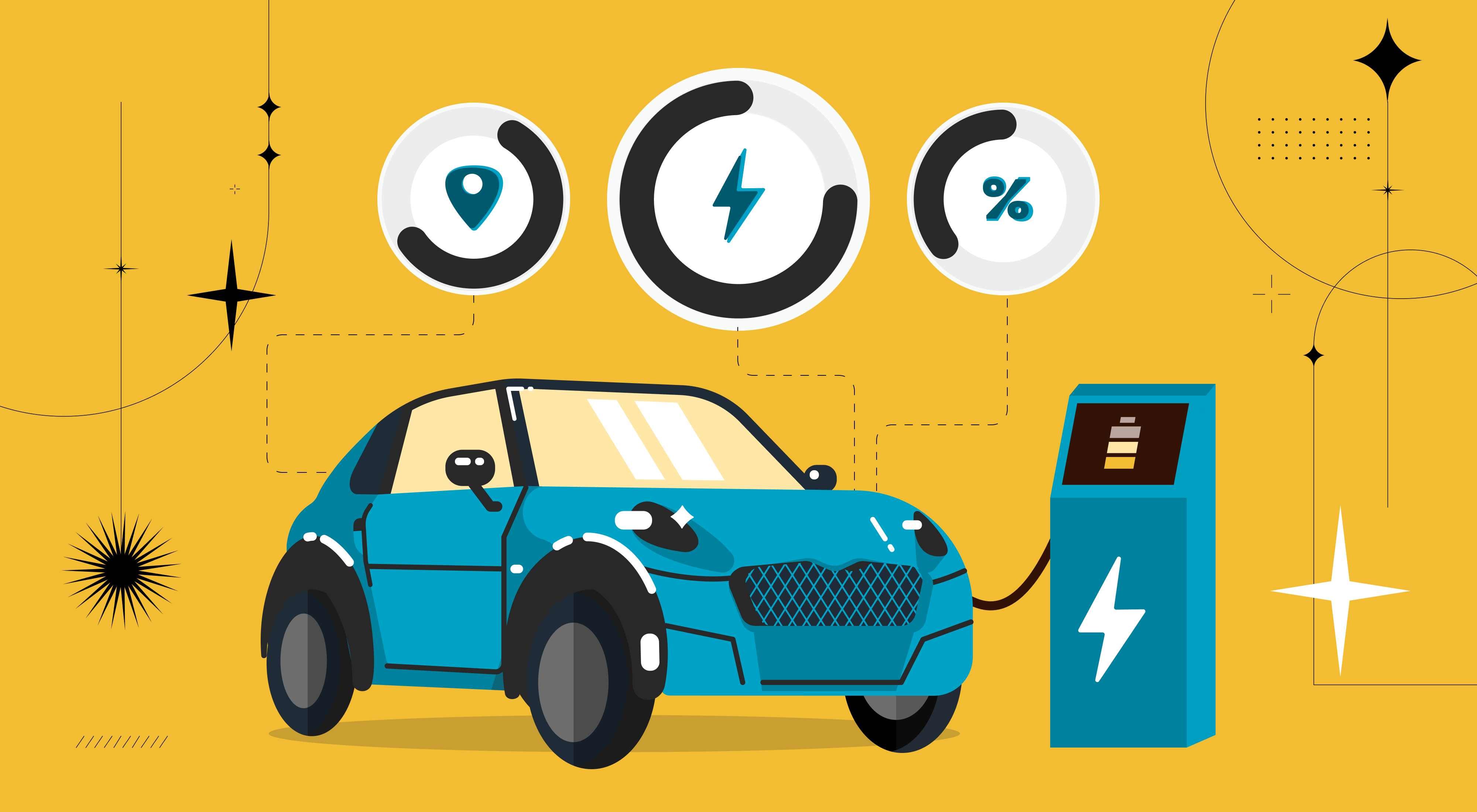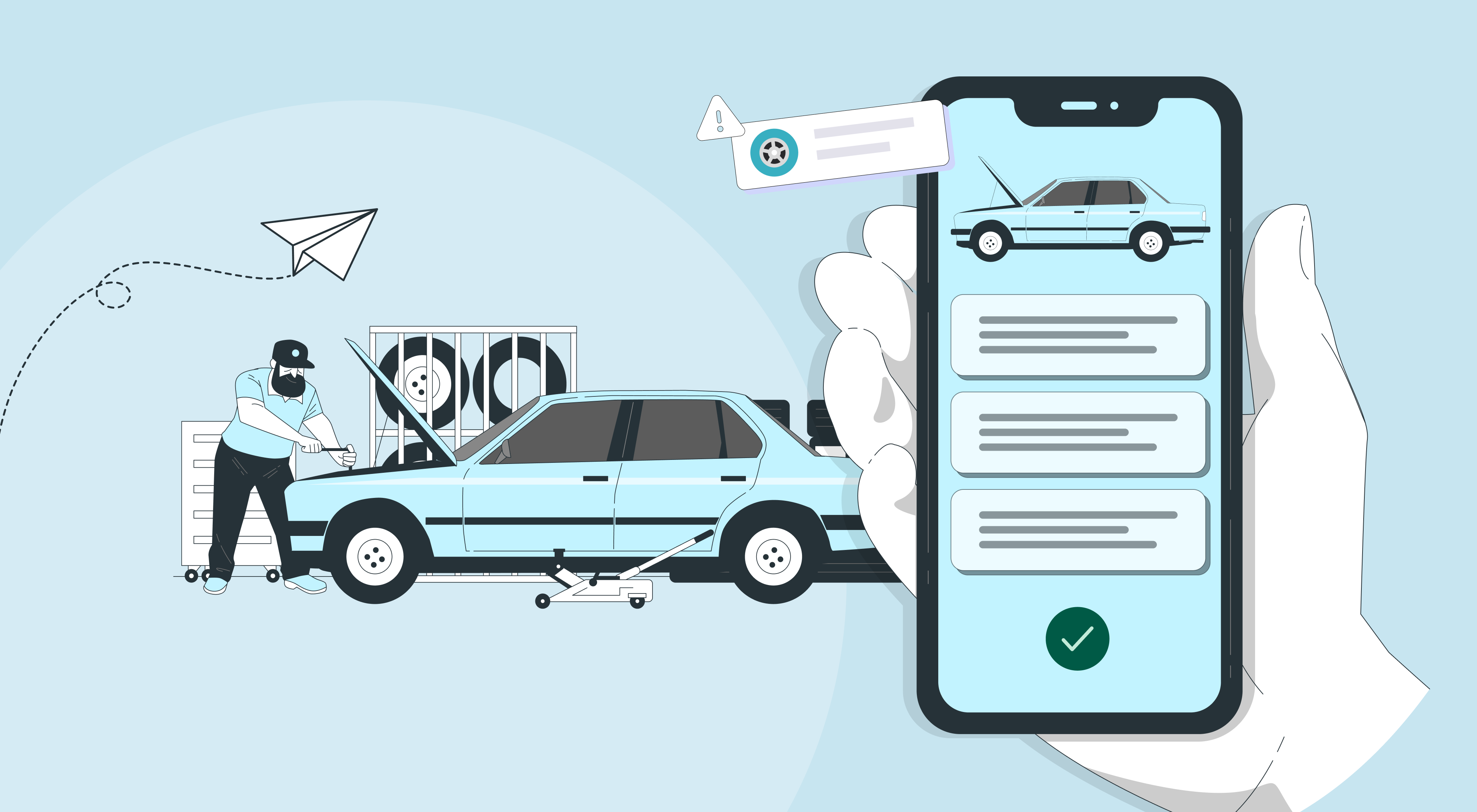The EV charging landscape is changing fast. Infrastructure is evolving, gaps are becoming more apparent, and driver expectations are changing as they become increasingly aware of the lifestyle adjustments needed to accommodate EVs. We’re excited to work with EV charging businesses building purpose-driven solutions that make EV ownership more convenient and reliable — like the peer-to-peer charging app, Buzze.
In this blog, we explore how EV charging apps are shaping charging accessibility and EV charging experiences. Let's dive into what apps like Buzze are doing with Smartcar to streamline fragmented solutions across charging networks!
Let’s dive in!
What problems can EV charging apps solve?
EV charging infrastructure is being added rapidly worldwide. In the United States, about 1,100 new public, fast-charging stations were introduced in the second half of 2023. But Q4 data also showed that 18% of public charging attempts failed, with overall infrastructure leaving much to be desired.
Europe’s EV charging infrastructure is far ahead in availability. Countries like the UK added a record-breaking 16,000 public chargers in 2023, a 43% increase from the previous year. However, this progress comes with a caveat — over half of Europe's charging infrastructure as of the end of 2023 was concentrated in the Netherlands, Germany, and France.
Across regions, potential and existing EV buyers are stumbling across the same problems. We’ve highlighted a few data points to back these trends up.
- It’s hard to find nearby EV chargers: 42% of car buyers surveyed by McKinsey say they would only move forward with an EV purchase if there are just as many public chargers as there are gas stations.
- Payment methods across charging stations are difficult to navigate: 30% of EV drivers surveyed by Chargelab would share billing data with charging stations to make payment more convenient.
- Public stations are often unreliable or unavailable for use: Over 71% of failed public charging station visits are caused by station malfunctions and outages.
- Drivers can’t always install EV chargers at home: McKinsey found that over 42% of respondents who don’t own EVs will not be able to charge at home because they live in multi-unit dwellings or don’t have sufficient power or space to install a charger.
EV drivers turn to EV software applications to help them navigate these challenges, with many businesses stepping into the market with innovative solutions that fill specific driver gaps.
EV charging apps at work: What is peer-to-peer EV charging?
In Smartcar’s 2023 State of Connected Car Apps report, we learned that 35% of drivers we surveyed download external applications to personalize vehicle services and experiences. 28% of respondents use apps to access diverse features that they can’t access in their automaker or charging network applications.
One emerging EV charging feature is peer-to-peer charging.
Peer-to-peer EV charging enables EV owners with home chargers to share their charging hardware with other EV drivers.
When Aaron Lieberman, former Arizona State Representative, bought his first EV in 2022, he quickly discovered that it wasn’t that simple to find reliable public EV charging spots. He had no choice but to buy and install his own Level 2 charger, even though he was only going to use it a few times a week.
He then had a lightbulb moment. If his EV charger was going to be left unused for most of the week, why not share it with his neighbors?
That was how Buzze was born.
The app is like Airbnb for EV charging. EV owners with Level 2 chargers can list their chargers on Buzze as a host, customize their availability, connect their bank account, and make money when drivers charge.
EV owners can then reserve chargers from hosts near them by selecting a charger pick-up and drop-off time and paying for their anticipated power consumption. Buzze has a simple, yet ambitious mission: To double public charging infrastructure over the next 2 years without actually having to build new stations from the ground up.
Buzze is an EV charging app pushing accessibility forward
EV charging apps like Buzze exist in the market to help EV drivers overcome roadblocks inhibiting them from adopting EVs.
“Many EV owners can’t install a level 2 charger because of their living arrangements, so they have to use commercial chargers,” says Lieberman. “We are hoping to connect drivers with hosts nearby their home or work to then charge regularly, conveniently and reliably, making EV ownership that much easier.
Case in point, one 2022 survey discovered that 40% of consumers did not buy an EV because they had no garage to support EV charging needs.
In the United States, for instance, nine states have right-to-charge laws that call for landlords and home-owner associations to allow EV charger installations for residents. But these laws differ across states and may enforce requirements that don’t necessarily make charger installations easy. In fact, five of these nine states use policy language that emphasizes the protection of unit owners rather than EV drivers.
Apps like Buzze can unlock more charging options within an EV owner’s geographic footprint. It also gives drivers the flexibility to accommodate their schedules instead of waiting at commercial chargers or looking for stations with the necessary amenities.

How does an EV charging app like Buzze use the Smartcar API?
EV telematics plays a big role in helping Buzze monitor charging sessions for accurate billing without limiting connections to specific charging network partnerships.
The Smartcar EV API helps Buzze remain a charger-agnostic platform, allowing the app to collect user consent from EV drivers and retrieve up-to-date charging data across 200 compatible EV models.
By maximizing EV reach with Smartcar, Buzze can better support a diverse EV market — like the 10 best-selling EV models of 2023, all Smartcar-compatible — without having to compromise driver privacy and speed-to-market.
The best EV charging apps to improve EV ownership
- Buzze
- Optiwatt
- Carge
- CAFU
So, can apps really solve the problems we’ve discussed in this article? We’re confident that big changes are already being made by this growing app ecosystem.
The same Chargelab survey that we referenced earlier found that over two-thirds of respondents used apps to find public chargers, surfacing an interesting trend that even Tesla EV drivers within their respondent group were using charging apps and stations outside the Tesla network.
Although charging network apps play a big role in making it easier for EV drivers to find and pay for public charging, there are other kinds of out-of-car applications that drivers can use to enhance their EV charging experience.
Here are a few examples of EV charging apps that drivers can use to optimize both the public and home charging experience:
- Peer-to-peer EV charging: The Buzze app allows EV drivers to become EV charger hosts and renters, enabling users to share chargers when not in use and unlock more charging options for those who can’t install their own at home.
- Smart charging: EV owners use apps like Optiwatt to optimize and schedule their EV charging sessions according to factors like electricity rates, the carbon intensity of the grid, or specific hours of the day.
- EV route planning: Apps like Carge help drivers inform route planning by using accurate EV data to locate chargers based on the vehicle location, remaining battery levels, required charging amenities, and more.
- Mobile EV charging: Solutions like CAFU provide on-demand mobile EV charging in residential neighborhoods, public parking lots, and community events or gatherings.
Advancing accessible, electrified transportation with EV charging apps
After a successful launch in Southern California, Buzze is excited to help drivers make the shift to electric vehicles by eliminating anxiety around charger installations and costs. Buzze host, Brian Gallagher, tells 10 News San Diego that he’s looking forward to the growth of peer-to-peer EV charging so he can use the money he makes to offset his utility bills. You can learn more about Buzze by visiting their website.
Looking to build and scale an EV charging app that puts drivers first? Here are a few helpful resources to get started with the Smartcar API:
- Smartcar’s Starter Apps: Use our pre-configured templates for EV businesses to get started with our EV charging APIs.
- The Build vs Buy guide: Understand the limitations of building your own integrations with popular EV makes and models.
- An introduction to EV APIs: Learn what you can do with Smartcar’s EV endpoints and developer tools.



